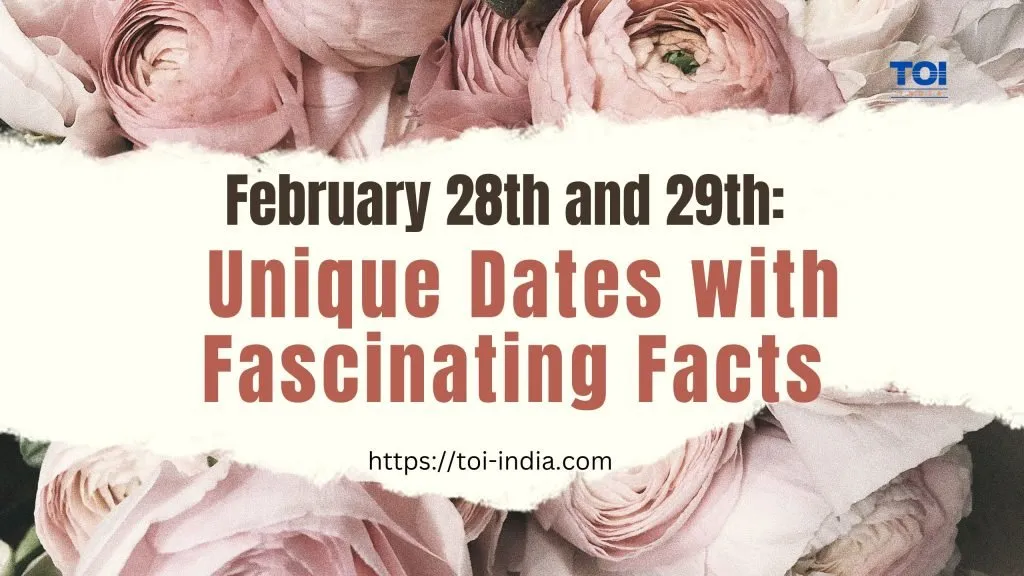In the calendar of every leap year, two special dates stand out: February 28th and February 29th. These dates hold a unique place in our yearly cycle, bringing with them interesting historical events, cultural traditions, and scientific significance. Let’s delve into the intriguing facts surrounding these exceptional dates.
Table of Contents
The Leap Year Phenomenon: February 28th and 29th
February 29th, also known as Leap Day, occurs only once every four years, making it a rare occurrence. This phenomenon is due to the need to synchronize the human-created Gregorian calendar with the Earth’s revolutions around the sun. Without leap years, our calendar would slowly drift out of sync with the seasons.
Historical Significance: February 28th and 29th
The concept of adding an extra day to the calendar to account for this discrepancy dates back to ancient civilizations. The ancient Egyptians were among the first to recognize the need for a leap year, implementing a system that included an extra day every four years in their calendar.
However, it was Julius Caesar who introduced the leap year into the Roman calendar in 45 BCE, with the advice of the Alexandrian astronomer Sosigenes. This reform, known as the Julian calendar, aimed to align the calendar year more closely with the solar year. Yet, it wasn’t until the Gregorian calendar reform in 1582 by Pope Gregory XIII that the leap year system was fine-tuned to its current form.
Quirky Traditions: February 28th and 29th
Throughout history, February 29th has been associated with various customs and traditions. One such tradition is the concept of Leap Day proposals, where it is believed that women can propose marriage to men on this day. This tradition is said to have originated in Ireland during the 5th century when St. Bridget complained to St. Patrick about women having to wait too long for suitors to propose. St. Patrick then supposedly decreed that women could propose on Leap Day. While the tradition may seem outdated today, it continues to be celebrated in various parts of the world.

Scientific Significance:
Aside from its cultural and historical significance, Leap Day also holds importance in the field of science. Astronomers and physicists study the leap-year phenomenon to better understand the Earth’s orbit and the intricacies of timekeeping. The leap year system is crucial for accurately measuring time and predicting celestial events.
Notable Events:
Several notable events have occurred on February 29th throughout history, adding to the intrigue surrounding this rare date. For example, in 1504, Christopher Columbus used a lunar eclipse to intimidate Jamaican natives, a tactic that helped him and his crew survive while stranded on the island. Additionally, in 1940, Hattie McDaniel became the first African American to win an Academy Award for her role in “Gone with the Wind,” a groundbreaking moment in cinema history.
February 28th:
While not as rare as Leap Day, February 28th also boasts interesting facts and historical events. One notable event is the establishment of the Republic of China in 1912, marking the end of over 2,000 years of imperial rule. Furthermore, in 1953, James Watson and Francis Crick discovered the double-helix structure of DNA, laying the foundation for modern genetics.
- Commonly the last day of February: In most years, February 28th marks the end of the shortest month. It is the 59th day of the year, and there are 306 days remaining until the year’s end.
- Celebrations and observances:Several countries and cultures celebrate various events on February 28th. These include:
- Kalevala Day (Finland): Also known as the Finnish Culture Day, it celebrates the national epic poem “Kalevala.”
- National Science Day (India): A day to honor the contributions of Indian scientists and promote scientific temper.
- Peace Memorial Day (Taiwan): Remembers those who died in the Chinese Civil War.
- Eastern Orthodox liturgics: Several saints are commemorated on this day in the Eastern Orthodox Church.
February 29th:
- Leap Day: This special day occurs only once every four years (except in years divisible by 100 but not 400) to keep the calendar synchronized with the Earth’s revolution around the sun. It is the 60th day of a leap year, with 306 days remaining until the year’s end.
- Celebrations and observances:
- Saint John Cassian: Remembered in the Orthodox Church on February 29th.
- Rare Disease Day: Celebrated on February 29th in leap years, raising awareness about rare diseases. In non-leap years, it is celebrated on February 28th.
- Bachelor’s Day (Ireland and United Kingdom): A humorous tradition where women “propose” to men on this day.
Interesting facts about February 28th and 29th:
- People born on February 29th are sometimes called “leapers” and can celebrate their birthdays only on the actual date every four years.
- Some cultures have unique traditions surrounding leap years and leap days. For example, in some European countries, women are traditionally allowed to propose to men on February 29th.
I hope this article provides a brief overview of these unique dates and the interesting facts surrounding them.
